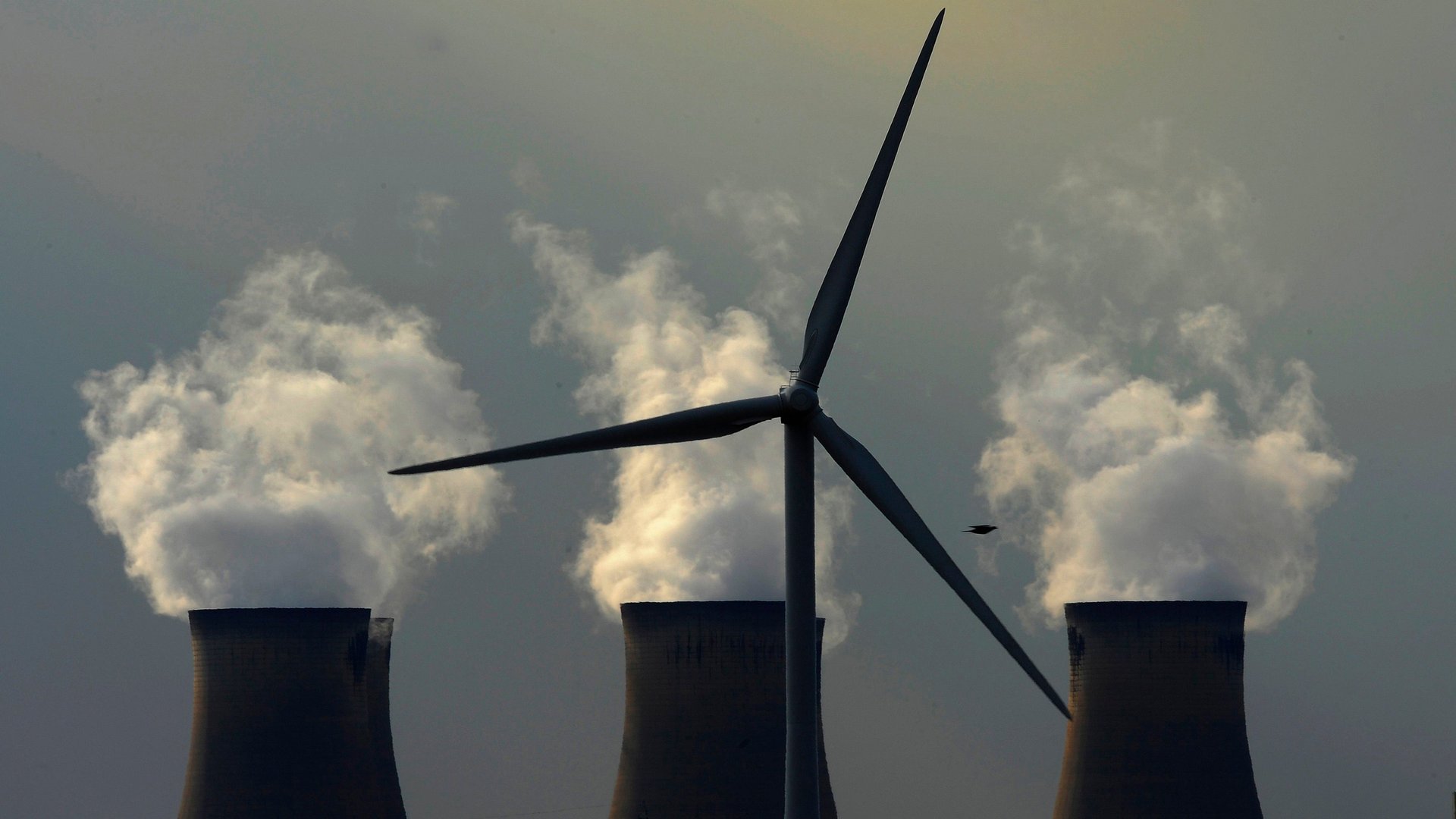The UK’s electrical grid is so overrun with renewable power, it may pay wind farms to stop producing it
Generating electricity from the sun and wind is great for the planet, but the infrastructure necessary to deal with these intermittent power sources is tricky. Too much or too little power can upset the balance of the grid, which has to be finely tuned to keep the voltage of the electricity it delivers to customers stable.


Generating electricity from the sun and wind is great for the planet, but the infrastructure necessary to deal with these intermittent power sources is tricky. Too much or too little power can upset the balance of the grid, which has to be finely tuned to keep the voltage of the electricity it delivers to customers stable.
Without a means of storing renewable energy or handling huge variations in production, too much electricity surging into the grid can damage appliances or even cause outages. This is the problem that the UK may face this summer, the country’s grid operator says. When electricity demand naturally falls during the summer months, it is thinking about paying wind farms to stop generating so much power.
For the past few years, the UK has been ramping up renewable-energy production—especially wind power—in order to reduce its carbon emissions. Government subsidies have also encouraged homes and businesses to install rooftop solar panels, which can bypass the grid altogether.
Meanwhile, National Grid, which manages the UK’s electricity network, has been trying to update its aging infrastructure. Ofgem, the UK’s energy regulator, estimates that payments to balance electricity generation when it gets out of whack—either too much or too little to meet demand, from both renewable and (mostly) fossil-fuel generators—ran to about £354 million ($540 million) in 2015, or less than 1% of energy bills.
This summer, National Grid estimates that maximum and minimum energy demand from utilities is likely to fall to an all-time low (paywall). Peak demand is predicted to be 35.7 gigawatts, compared with 37.5 gigawatts in 2015, and minimum demand to be 18.1 gigawatts, compared with 18.4 gigawatts in 2015.
The UK’s electricity consumption has been falling in recent years. Some of the decline was down to the financial crisis, in addition to increased energy efficiency at homes and businesses, according to a National Grid spokesman.
Reduced energy demand and more prevalent renewable power is a good combination for the climate, but a headache for grid operators. These staid businesses are scrambling to balance their grids in response to a rapid energy transition. In the meantime, they may have to keep paying some power plants for, in effect, not doing their job.